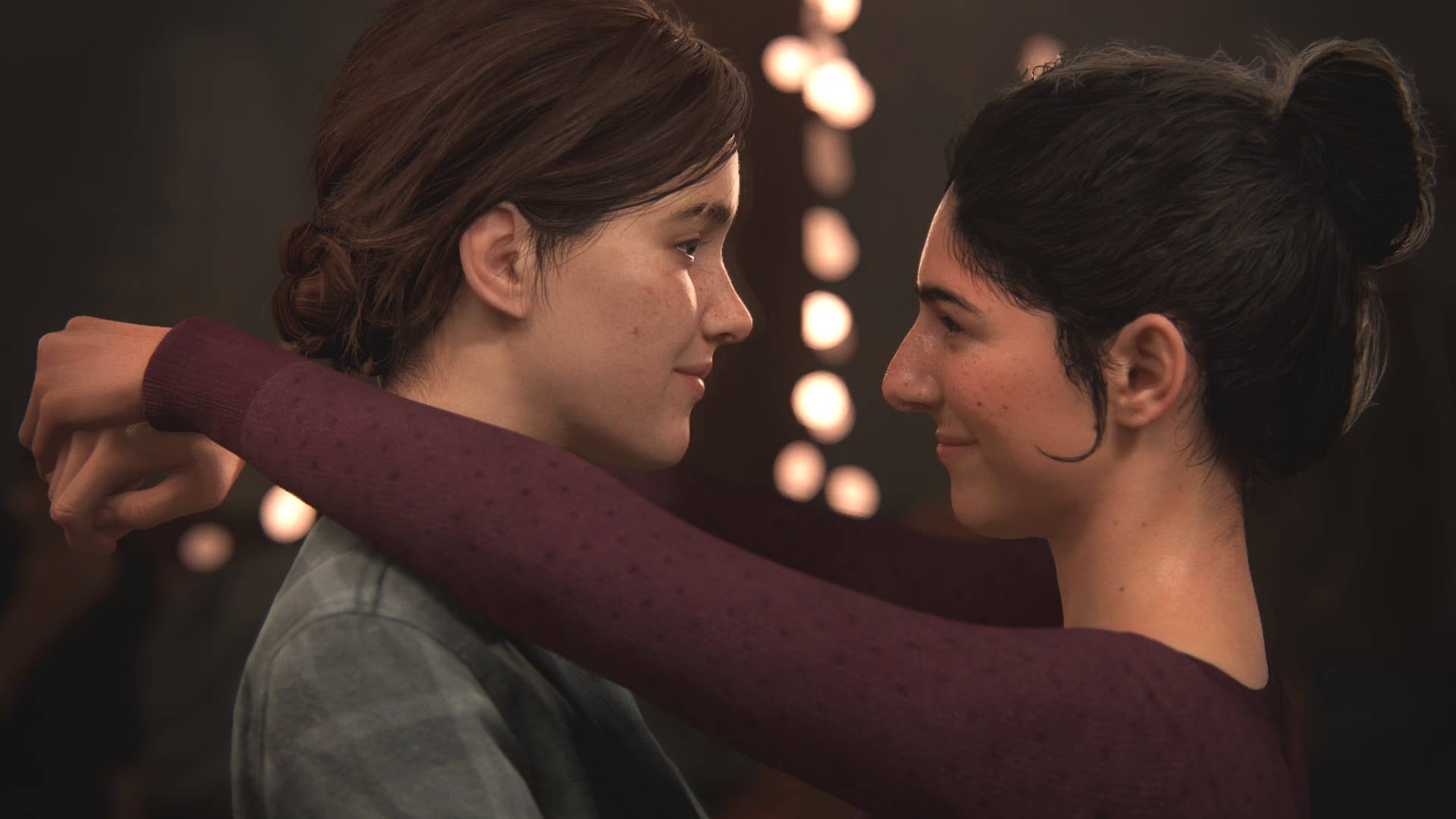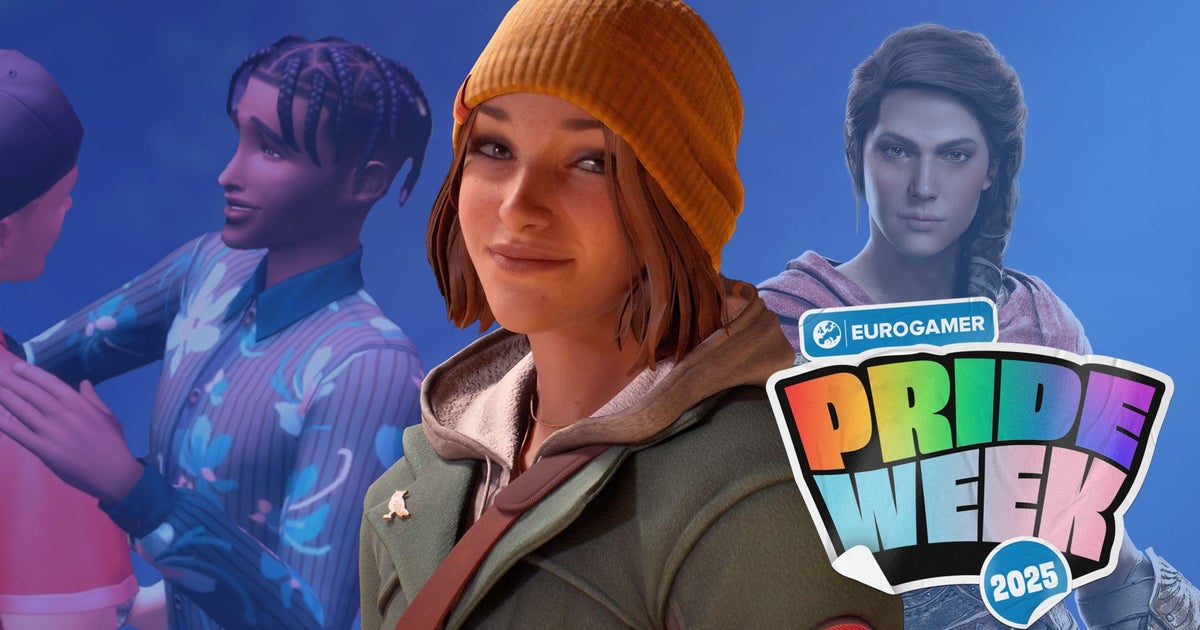Hello! Eurogamer is once again marking Pride with a week of features celebrating the intersection of queer culture and gaming in all its guises. Things get underway today as Keza MacDonald whisks us through a brief history of bisexuality in video games, and if you want catch up on previous years’ festivities, why not have a nose around our Pride Week hub?
In 2022, The Sims 4 added a new set of customisation options for your virtual people: you can now define their sexuality, checking a little box to select whether they’re interested in WooHoo and/or romantic relationships with men, women, or both. The thing is, for the 20 years before this, all Sims were bisexual, cheerfully exhibiting their capacity for attraction to more than one gender at any opportunity. It amuses me enormously that it took over two decades for Maxis to finally add straight people to the game.
The Sims are (or were) some of the only truly bisexual characters in all of gaming, in fact. (Don’t worry, I’m not about to launch into a prescriptive definition of bisexuality here – part of the joy of being bi is that you don’t have to play by anyone’s rules.) Because when games started tentatively including queer representation in the late 00s, it began with playersexuality: the idea that characters would be attracted to the player, no matter who they were. You could marry someone of any gender in Skyrim or the later Harvest Moon games, for example. Liara in Mass Effect would want whichever Shepherd – male or female – you chose to be.
This was a kind of halfway house, letting developers cater to queer players without actually having to incorporate anything about what it means to be queer into the storyline – without having to talk about the kinds of experiences and challenges that real queer people have. For playersexual characters, their queerness isn’t part of who they are, because it exists only to benefit the player. This lets players have their gay-ass romances without making a big deal about it, which is a double-edged sword. It’s a very love-means-love version of queerness as just ‘being able to kiss whomever you want’. And also, playersexuality plays into a common misconception about bi people in the real world: that we can choose whether to play the game of life as gay or straight, when in fact we are always our big bi selves no matter who we’re with.
But, look, this playersexuality was GREATLY appreciated at the time, especially by bisexual millennials starved of any kind of media representation at all (hello!). I fondly remember flirting with all of Dragon Age 2‘s cast of companions, who seemed to be competing with each other to fall in love with me, and still very much enjoy a bit of playersexuality to this day in Baldur’s Gate 3. But as I’ve gotten older, and bisexuality has come out of the weird shadowy space that it occupied when I was young (Bisexuality: what is it? Who are they? What do they WANT?), I have started to yearn for things that really talk about all the many versions of the bi experience. TV shows like Sex Education, Schitt’s Creek and Mae Martin’s Feel Good have really raised the bar in this respect. Are games following suit?
When queer representation in games really started taking off in the mid-2010s, it began with lesbian stories and romances. Before 2014, when I was in my mid-twenties, I had never played as a teenaged girl in a video game, let alone a queer one; then came The Last of Us: Left Behind, with its heart-wrenching depiction of a young Ellie’s formative relationship with her best friend. 2013’s Gone Home also depicted a relationship between two teenaged girls, though from the outside – its denouement hit hard for me, because at that time I almost didn’t dare to hope that a game might be telling a story like this, about queer girls in love. These games were followed not long afterwards by Life is Strange, which tentatively implied that both its teen-girl main characters were Very Much Not Straight.

We also got some of our first actually bi characters around this time, rather than playersexual ones. Canonically I played Assassin’s Creed Odyssey as a voracious bi muscle mommy, because sometimes it IS fun to live up to the (usually negative) stereotype of the greedy bisexual. Mae from Night in the Woods is pansexual and even talks about it. But it wouldn’t be until the 2020s that bi characters came into their own.
It’s impossible to talk about bisexuality in games without inviting a little worship for Zagreus, the literal god of bi (and poly) game heroes. He truly makes a lot of time for banging demigods on his journey out of the Underworld in 2020’s Hades, which I deeply respect. He turns a lot of queer tropes upside down: he’s camp, devilish (unsurprisingly for the son of Greek Satan), articulate and sardonic, but we are not invited to hate him as we were, say, Jafar or Scar or a bunch of other 90s queer-coded characters. We’re along for the ride. And he is certainly not hiding himself.
Life is Strange would redeem itself for its earlier tentativeness with the openly bisexual Alex Chen, in 2021’s True Colors (fun fact: her singing voice in the game is provided by mxmtoon, a bi artist). And then, finally, the series brought Max Caulfield properly out of the closet too, in 2024’s Double Exposure. That game had to do some narrative gymnastics to accommodate for whether players had pursued a situationship with Chloe (either in their heads or in the original Life is Strange), but I maintain that Max’s adorably inept flirting with the girl behind the bar in her college town is the single most accurate representation of the bi-woman experience in all of video games. It’s just too real.

Life is Strange’s Max Caulfield is a really good allegory for how bi representation has evolved over the past ten years in video games – and queer representation as a whole, actually. In 2015 it was really left up to the player to decide whether Max was bi or not, giving her the opportunity to try and awkwardly kiss Chloe in the school swimming pool if the player wanted to. In 2024: she’s unequivocally bi whether you want her to be or not. It’s just who she is. In The Last of Us: Left Behind in 2014, Ellie became gaming’s most high-profile lesbian character; in 2020 her lover Dina became one of the most important bisexual ones.
Bisexuality in gaming now has at least some of the range that it does in real life, whether you relate more strongly to Eivor and their hedonistic historical hook-ups in Assassin’s Creed Valhalla or the shy but self-assured Alex Chen. Playersexuality might remain the most popular form of bi representation – and look, it is fun – but it’s gratifying that we get more humanising depictions now, too.
